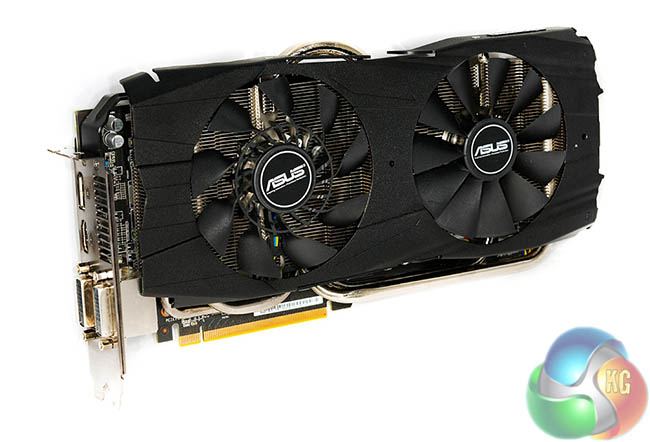
The first waves of AMD partner 290 cards are being released this month, and today we follow up on our Gigabyte and Sapphire reviews taking a look at the latest card from ASUS, the R9 290X Direct CU II OC. This card ships with a proprietary cooler and the fastest ‘out of the box' speeds yet. Is it worth the £499.99 inc vat asking price?

Today we supplement our tests by analysing performance at 3840×2160 (4k HD) on the Asus PQ321QE. We recently acquired one of these screens for high end graphics card reviews. Sure, the £2999.99 asking price will mean very few can afford the upgrade right now, but in the next year we expect the cost to drop.

Setting up this monitor is simple with both AMD and Nvidia hardware (via DisplayPort cable) and we didn’t experience any issues. To achieve a refresh rate of 60hz after the Forceware or Catalyst drivers were installed we enable the Multi Stream Transport mode within a submenu of the Asus PQ321QE.

On paper there is no doubt that the R9 290X is a monster, clocked at 1GHZ. The Asus R9 290X Direct CU II OC is the highest clocked 290X we have reviewed to date. The core is overclocked to 1,050mhz, and the GDDR5 memory is overclocked to 1,350mhz (5.4Gbps effective).
The Hawaii GPU is built on the 28nm process and the card comprises 6.2 billion transistors. The R9 290X has 64 ROP’s, 176 TMU’s and 2,816 unifed shaders. The 4GB of GDDR5 memory runs at 1,250mhz (5Gbps effective) and is connected via an ultra wide 512 bit memory interface. We have tested the reference card when it launched and while we were impressed – the cooling solution was woefully inadequate.
The R9 290X, along with the R7 260X features a programmable audio pipeline. The R9 270X and R9 280X don’t. This new TrueAudio technology is designed for game audio artists and engineers, so they can ‘bring their artistic vision beyond sound production into the realm of sound processing’. This technology is intended to transform game audio as programmable shaders transformed graphics in the following ways:
- Programmable audio pipeline grants artistic freedom to game audio engineers for sound processing.
- Easy to access through popular audio libraries used by top game developers.
- Fundamentally redefines the nature of a modern PC graphics card.
- Spatialization, reverb, mastering limiters and simultaneous voices are only the beginning.
 KitGuru KitGuru.net – Tech News | Hardware News | Hardware Reviews | IOS | Mobile | Gaming | Graphics Cards
KitGuru KitGuru.net – Tech News | Hardware News | Hardware Reviews | IOS | Mobile | Gaming | Graphics Cards



I love the GPU reviews here, so much information and great buying advice. I like the ASUS cards, they are always built very well, although they tend to be more expensive, than even Sapphire, who aren’t cheap.
Very expensive, I want to see more 290 reviews, not the X versions, they are way out of most peoples price range.
I have always bought ASUS cards – although I must admit not at £500! Quite happy with my 670, still rocking well with modern games.
No stock again 🙁 AMD need to get their act together with their partners. by the time they get a lot of stock of 290’s and 290x’s Nvidia will have their next generation out !
Its an interesting point, triple fan coolers look to be the future for these high end boards. That Palit GTX780ti got me excited, but I just can’t justify £630 on a graphics card.
I agree though, why no 290 reviews, the X version is just way too expensive. more please.
Could you please update the review with VRM temps? Just scroll down on the sensor tab on GPU-Z. Thanks!
I test my asus 780 Gtx 3G SLI 2 video card and runs it predy good whit 5k ultra samsung TV 65inch and I test it whit my game BF4 125 fps my dream rate ……